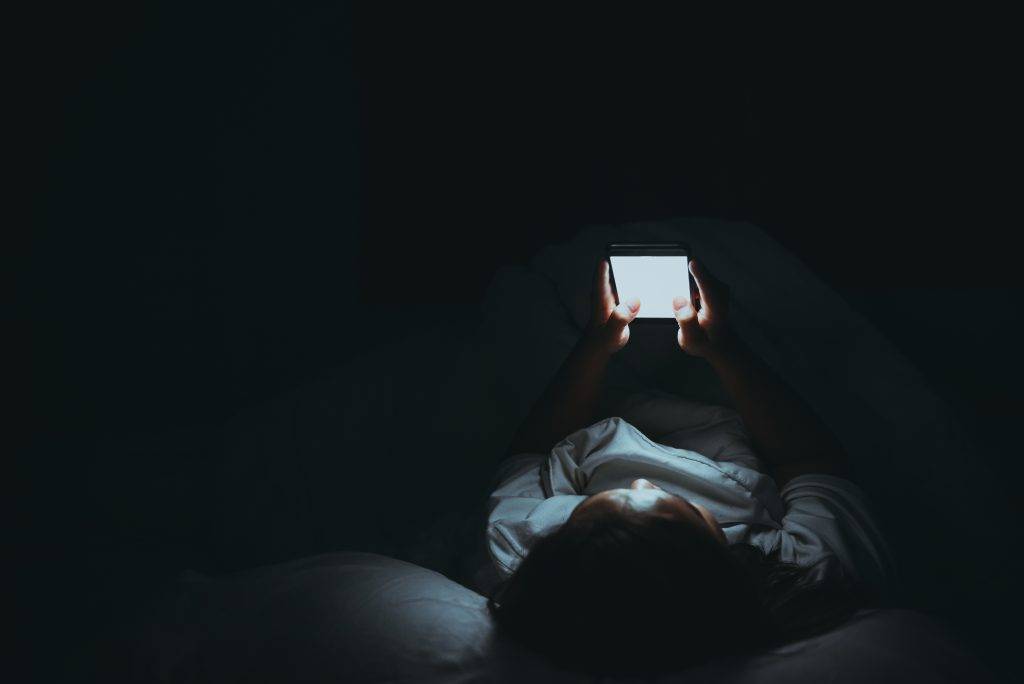SUBSCRIBE AND SAVE! | SIGN ME UP!

Written by MacuHealth
Reviewed by Jim Stringham, Ph.D.
The optics of your eye projects an image onto the retina, much like an old-fashioned camera does with film. And just like a camera, any number of factors can cause harm to that system and change how you see the world. This includes the high-energy blue light that comes from your digital devices. So what does blue light do to your retina? We’ll look at how this vital area of the eye works and how our phones, tablets, and computers can affect our optical system.
The retina, located in the back of the eye, is part of the central nervous system. Thus this area consists of several layers of networked cells and their “wiring.” One part of this network are photoreceptor cells, often referred to as rods and cones. These capture the light that reaches the retina, which initiate a cascade of chemical and electrical events. The brain communicates them to the optic nerve and translates all of these signals into visual perception.
The macula is a term to describe the center of the retina. Because this region is cone photoreceptor-dominated, it enables daylight and color vision and gives detail to what we see. The remainder of the retina is dominated by rods, which promote sensitivity to dim-light conditions, such as vision at night.
As stated above, the photoreceptor cells in the macula convert light to electric energy. Then the brain interprets these transmissions. This high metabolic activity is very demanding and requires a lot of energy and nutrition to fuel the entire process.
Additionally, the photoreceptor environment is necessarily rich in oxygen and requires exposure to visible light to see, adding to the macula’s metabolic demands. These twin stresses can lead to damage.
What does blue light do to harm the retina? Blue light is composed of relatively short wavelengths, which have higher energy. Because chronic exposure to this high-energy light can produce photo-oxidation, it can compromise retinal health and performance. And over a lifetime, chronic blue light exposure can damage your macula, degrade your visual performance, and could potentially contribute to the development of age-related macular degeneration (AMD).
But there is a way to protect the eye. A single layer of cells behind the retina, known as retinal pigmented epithelium (RPE), nurtures the photoreceptors and removes waste products. One of these waste products from photoreceptor damage is known as lipofuscin (a yellow age pigment). This pigment accumulates over time in RPE cells and compromises their ability to function optimally (or at all).
As we age, lipofuscin fills the RPE cells, causing these cells to give out and extrude their contents. These cells, seen as lipids and proteins, are called drusen. The collection of these yellow deposits is a typical symptom of early AMD. Blue light interacts with lipofuscin to produce additional oxidative stress. This also causes further stress to the retina, increasing drusen formation and furthering the development of AMD.
What does blue light do to your vision in the long term? It’s scattered in front of the retina, contributing to glare and a reduction in contrast sensitivity, leading to a decline in visual performance.
You can find blue light in:
In front of the photoreceptors is macular pigment, which means it filters light before it reaches photoreceptors and RPE. This protects them from free radicals and photo-oxidative damage. It is composed of the carotenoids Lutein, Zeaxanthin and Meso-Zeaxanthin. The highest concentration of cone photoreceptors is in the center of the macula, known as the fovea. This area is responsible for sharp central vision and color. Macular pigment protects the entire macula. However, Meso-Zeaxanthin protects the center (and most vulnerable) region. This conveniently gives the fovea the best antioxidant protection of the three macular carotenoids.
Low macular pigment can cause photo-oxidative stress to the macula. Because more blue light is exposed to the cone photoreceptors, particularly in the fovea, an insufficient amount of antioxidants are available to neutralize the damaging free radicals. Studies have shown that deficiencies in the carotenoids that make up the macular pigment are associated with poor visual performance and age-related macular degeneration.
How can we protect our eyes from what blue light does to our vision? The only way to replenish these vital antioxidants is through diet. Research shows that Lutein, Zeaxanthin and Meso-Zeaxanthin can be found in foods such as spinach, broccoli, corn, and eggs. These vital nutrients can also be replenished through supplementation.
Peer-reviewed research proves that supplementation with Lutein, Zeaxanthin and Meso-Zeaxanthin rebuilds macular pigment and enhances vision in diseased and healthy eyes. MacuHealth and MacuHealth Plus+ are specifically formulated in the same 10:10:2 ratio found in natural macular pigment (10mg Meso-Zeaxanthin, 10mg Lutein, 2mg Zeaxanthin). These supplements enrich and restore macular pigment to optimum levels with continued use.